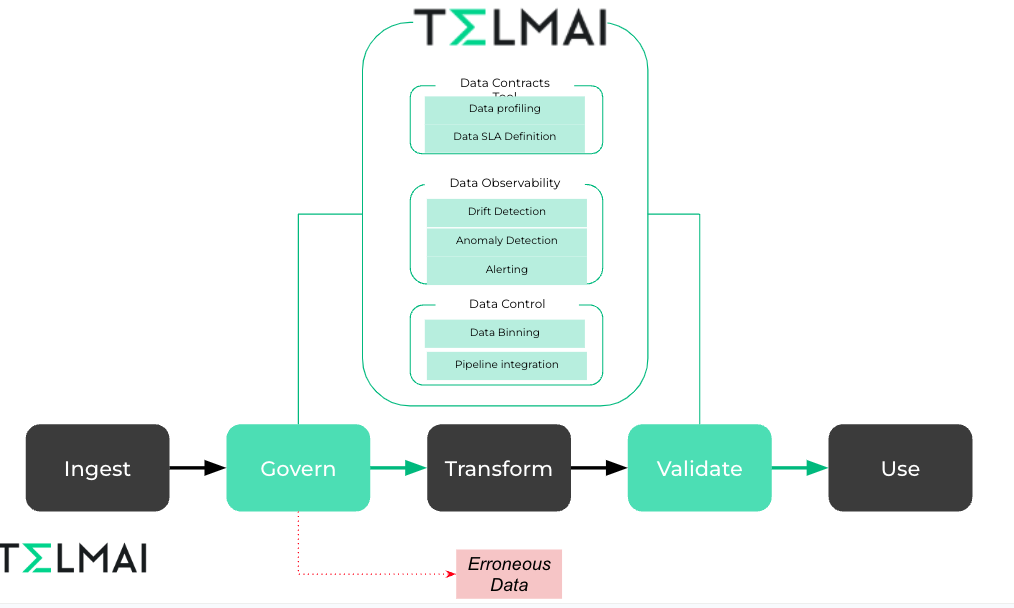Why data validation matters: 8 Steps to boost data quality & value
Following all the steps are necessary, but step 4 i.e. “Verify data against defined rules and criteria” is the most important. Learn some common rules and how using an automated tool can make life even easier.

Imagine you’re a skilled chef, preparing to create a culinary masterpiece. You gather your ingredients, only to find out they have expired or are spoiled. Now, your dish is at risk of turning out subpar, or worse, inedible. The same principle applies to data validation in the world of data engineering. Working with inaccurate or poor-quality data can lead to disastrous consequences in decision-making and operational efficiency.
So, how do you ensure data is valid? Let’s find out.
Data validation is the process of ensuring the accuracy and quality of data. It plays a crucial role in tasks such as analytics, data science, machine learning, and data migration initiatives. By incorporating validation rules into your workflow, data becomes more consistent, functional, and valuable to users.
Data validation steps
In setting up the process for your data validation, here are the steps to keep in mind:
- Gather program requirements from technical and business stakeholders.
- Define validation rules and criteria.
- Collect and organize datasets.
- Verify data against defined rules and criteria.
- Identify errors or inconsistencies and determine how to handle them.
- Share findings with the organization and review.
- Document the validation process and results.
- Build an ongoing monitoring cadence to automate validation.
Step 4 ie “Verify data against defined rules and criteria” is the most important and there are several data validation methods you could use, including:
- Coding data validation with SQL or Python scripts.
- Using Excel or Google Sheets for basic data validation.
- Employing ETL, ELT, or data integration tools to integrate data validation policies into workflows.
- Leveraging data observability tools like Telmai, which offer customizable data validation workflows and ML-based learning to detect data consistency issues.
What does valid data look like?
Every organization has its own unique rules for how data should be stored and maintained. Some common examples of data validation rules that help maintain integrity and clarity include:
- Data type (e.g., a name field should contain a string and not include any digits).
- Range (e.g., a number between 0-1000 or transaction amount > $0)
- Consistent expressions (e.g., using either Senior or Sr. or Sr)
- Controlled pick-list or reference data (e.g., ISO-3166 country codes)
- Conformity to business rules (e.g., return date > purchase order date)
- Syntax validation (e.g., date format DD-MM-YYYY or email entries should all include an “@” symbol)
Why does rule-based validation alone not work today?
Validating Data techniques have historically been rule-based, and it worked for that scale of data. Today the data itself is constantly changing, and so are the validations around it; hence you need to augment your validation with ML-based techniques.
Elevate your data validation game with Telmai’s data observability platform

Telmai is a complete data observability platform, not only to automate data validation, but offering numerous benefits such as real-time monitoring and alerting of data quality issues, root cause analysis, integration with other tools and systems, and collaboration and communication among team members.
Best of all, Telmai is data type agnostic. If you have streaming or semi-structured data, you don’t have to transform it into a structured format in order to run the validation rules. There’s no limits on data size and Telmai has its own data quality computation layer that can analyze the health of your data at scale without overloading your databases and warehouses with data validation queries.
To achieve effective data validation, it’s essential to involve stakeholders early and often, use automated tools, regularly review and update the data validation process, and determine the most suitable method based on your data’s complexity and size. And by using an automated tool like Telmai, organizations can avoid potential pitfalls and make better-informed decisions based on reliable data. So, why validate data? Because you can’t afford not to.
- On this page
See what’s possible with Telmai
Request a demo to see the full power of Telmai’s data observability tool for yourself.